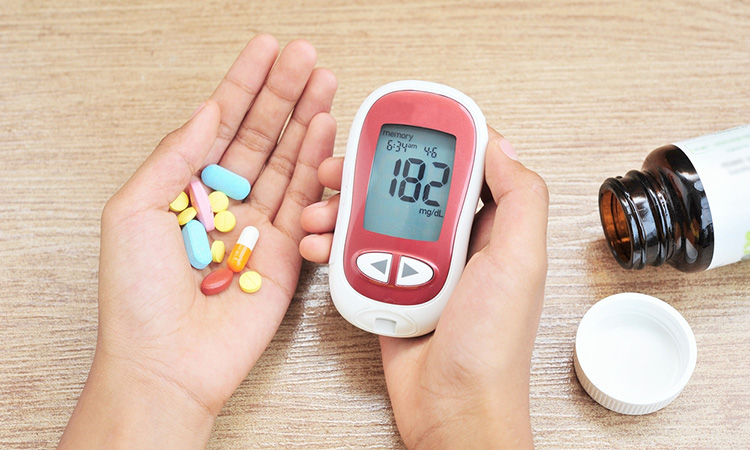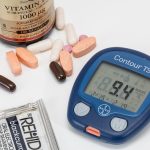What Is The Safest Drug For Type 2 Diabetes?

Type 2 diabetes is a chronic metabolic disorder characterized by high blood glucose levels due to the body’s inability to use insulin effectively. The prevalence of type 2 diabetes has been increasing worldwide, and it is estimated to affect more than 400 million people globally. The management of type 2 diabetes requires a multifactorial approach that includes lifestyle modifications, such as dietary changes and regular exercise, as well as medications.
The primary goal of treatment in type 2 diabetes is to achieve and maintain glycemic control, as well as to prevent or delay the complications associated with the disease. The American Diabetes Association (ADA) recommends an individualized approach to treatment, taking into account the patient’s age, comorbidities, and other factors that may affect treatment outcomes. Several classes of medications are available for the management of type 2 diabetes, each with its unique mechanism of action, benefits, and potential risks. In this article, we will discuss the different types of medications used for the treatment of type 2 diabetes, with a particular focus on the safety of these drugs.
Biguanides
Biguanides, such as metformin, are among the most commonly used drugs for the treatment of type 2 diabetes. Metformin works by reducing glucose production in the liver and improving insulin sensitivity. It has been shown to reduce the risk of cardiovascular events in patients with type 2 diabetes and is considered a first-line therapy in the management of the disease.
Metformin is generally safe and well-tolerated, with gastrointestinal side effects, such as nausea, vomiting, and diarrhea, being the most common adverse effects. However, these side effects are usually mild and can be managed by starting with a low dose and gradually increasing the dose over time. Metformin is contraindicated in patients with impaired renal function or liver disease and should be used with caution in patients with congestive heart failure or respiratory disease.
Sulfonylureas
Sulfonylureas, such as glyburide, glipizide, and glimepiride, are another class of drugs commonly used in the management of type 2 diabetes. Sulfonylureas work by stimulating insulin secretion from the pancreas, which leads to a reduction in blood glucose levels.
Sulfonylureas are generally safe and effective in lowering blood glucose levels. However, they are associated with a high risk of hypoglycemia, particularly in elderly patients or those with impaired renal function. Other adverse effects of sulfonylureas include weight gain and an increased risk of cardiovascular events. Sulfonylureas should be used with caution in patients with liver disease or congestive heart failure.
Meglitinides
Meglitinides, such as repaglinide and nateglinide, are a class of drugs that work by stimulating insulin secretion from the pancreas. They are generally used as an alternative to sulfonylureas in patients with type 2 diabetes who have a higher risk of hypoglycemia.
Meglitinides are generally safe and well-tolerated, with the most common adverse effects being hypoglycemia and weight gain. Meglitinides should be used with caution in patients with impaired liver or kidney function and those who are at risk of hypoglycemia.
Alpha-glucosidase inhibitors
Alpha-glucosidase inhibitors, such as acarbose and miglitol, are a class of drugs that work by inhibiting the digestion of carbohydrates, which leads to a reduction in blood glucose levels. They are generally used in patients with type 2 diabetes who have a high postprandial blood glucose level.
Alpha-glucosidase inhibitors are generally safe and well-tolerated, with gastrointestinal side effects being the most common adverse effects, such as flatulence, abdominal pain, and diarrhea. These side effects are usually mild and can be managed by starting with a low dose and gradually increasing the dose over time. Alpha-glucosidase inhibitors should be used with caution in patients with liver disease or inflammatory bowel disease.
Thiazolidinediones
Thiazolidinediones, such as pioglitazone and rosiglitazone, are a class of drugs that work by improving insulin sensitivity and reducing glucose production in the liver. They are generally used in patients with type 2 diabetes who have insulin resistance.
Thiazolidinediones are generally safe and well-tolerated, with the most common adverse effects being weight gain and edema. Thiazolidinediones have been associated with an increased risk of cardiovascular events and should be used with caution in patients with congestive heart failure.
Dipeptidyl peptidase-4 inhibitors
Dipeptidyl peptidase-4 inhibitors, such as sitagliptin, saxagliptin, and linagliptin, are a class of drugs that work by increasing the secretion of insulin and reducing glucose production in the liver. They are generally used in patients with type 2 diabetes who have inadequate glycemic control despite lifestyle modifications and metformin therapy.
Dipeptidyl peptidase-4 inhibitors are generally safe and well-tolerated, with the most common adverse effects being nasopharyngitis, upper respiratory tract infections, and headaches. Dipeptidyl peptidase-4 inhibitors should be used with caution in patients with pancreatitis or impaired renal function.
Sodium-glucose cotransporter-2 inhibitors
Sodium-glucose cotransporter-2 (SGLT2) inhibitors, such as empagliflozin, canagliflozin, and dapagliflozin, are a class of drugs that work by reducing glucose reabsorption in the kidneys, leading to an increase in urinary glucose excretion. They are generally used in patients with type 2 diabetes who have inadequate glycemic control despite lifestyle modifications and metformin therapy.
SGLT2 inhibitors are generally safe and well-tolerated, with the most common adverse effects being genital infections and urinary tract infections. SGLT2 inhibitors have been associated with an increased risk of diabetic ketoacidosis and should be used with caution in patients with a history of ketoacidosis or who are at risk of dehydration.
Glucagon-like peptide-1 receptor agonists
Glucagon-like peptide-1 (GLP-1) receptor agonists, such as Dulaglutide (Trulicity), Exenatide (Byetta), Semaglutide (Ozempic) and Liraglutide (Victoza, Saxenda) , are a class of drugs that work by increasing insulin secretion and reducing glucose production in the liver. They are generally used in patients with type 2 diabetes who have inadequate glycemic control despite lifestyle modifications and metformin therapy.
GLP-1 receptor agonists are generally safe and well-tolerated, with the most common adverse effects being nausea, vomiting, and diarrhea. GLP-1 receptor agonists have been associated with an increased risk of pancreatitis and should be used with caution in patients with a history of pancreatitis or who are at high risk of developing pancreatitis.
Conclusion
In conclusion, the management of type 2 diabetes requires a multifactorial approach that includes lifestyle modifications, such as dietary changes and regular exercise, as well as medications. Several classes of medications are available for the management of type 2 diabetes, each with its unique mechanism of action, benefits, and potential risks. The choice of medication should be individualized, taking into account the patient’s age, comorbidities, and other factors





